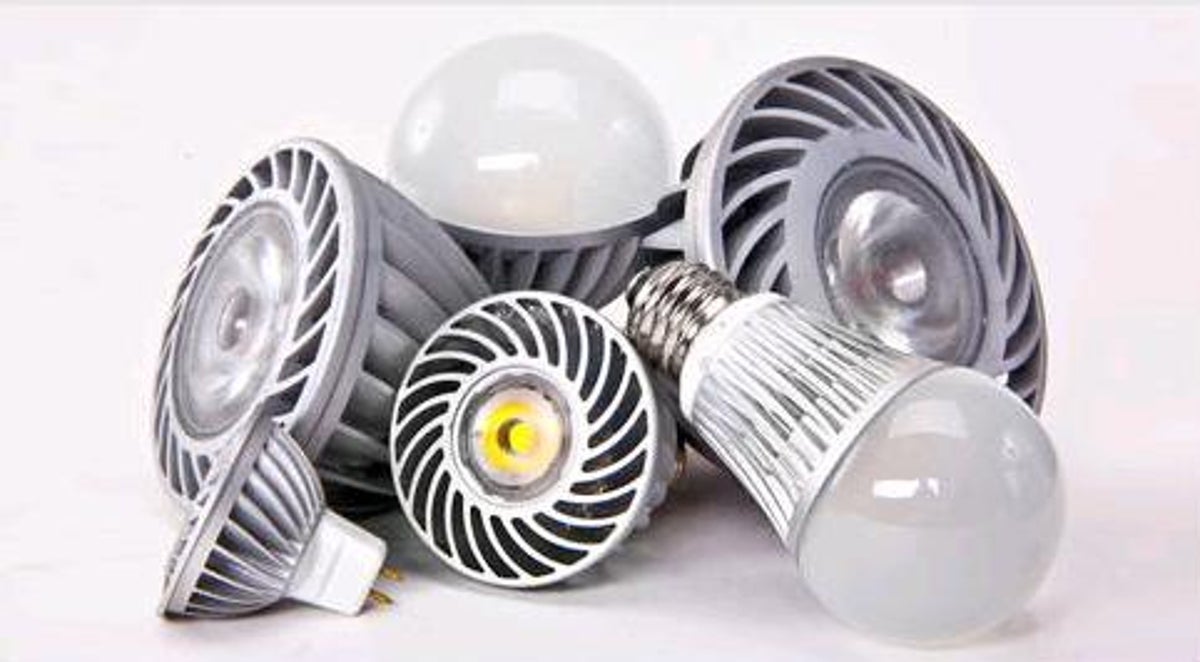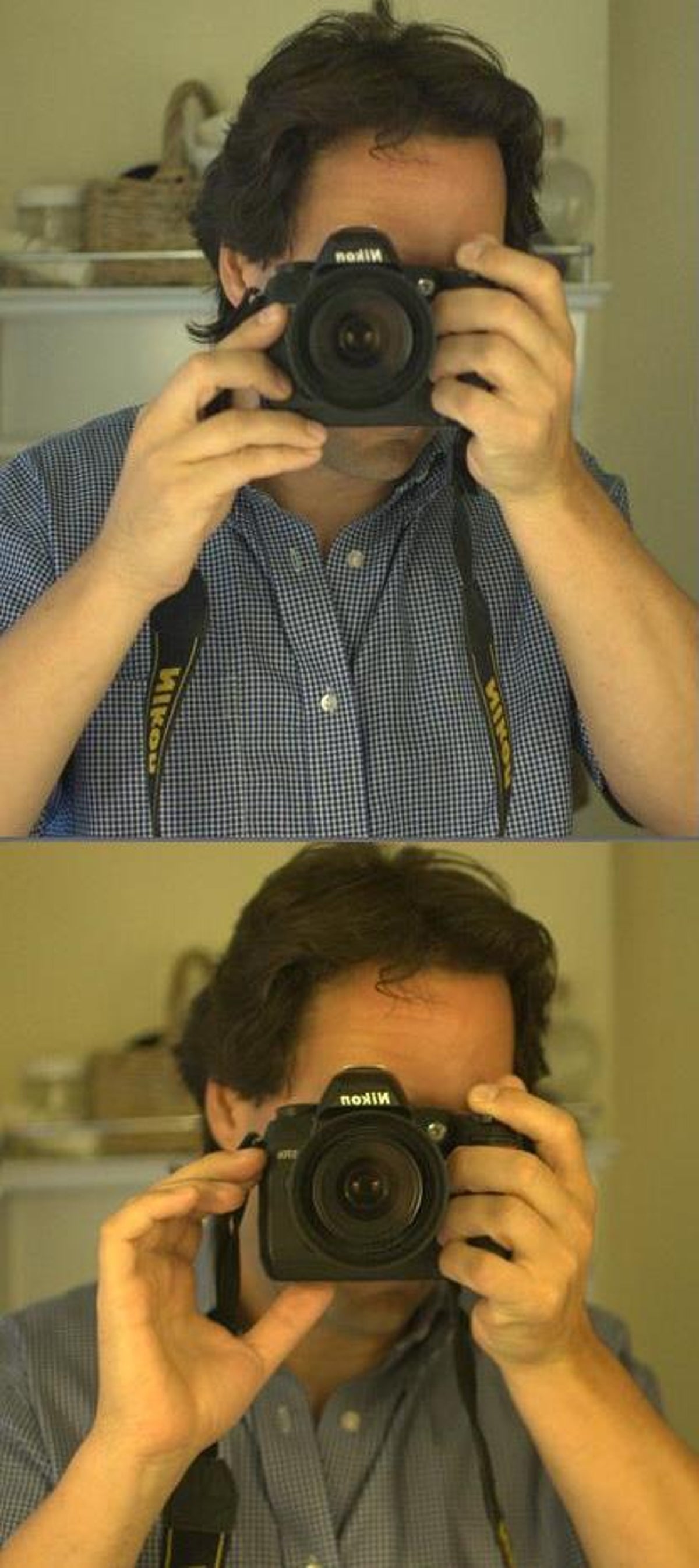LED bulbs creep into the home (photos)
Lighting manufacturers have improved the light quality and output of LED bulbs for general lighting, which opens up more options for efficient lighting.

Pile of LEDs
LED lights are already widely used for lighting in retail outlets, such as restaurants, and as part of electronics equipment, such as flat-screen TVs. But now there are more options for LED bulbs in the home. Here are the LED lamps available from Lighting Sciences Group, many of which will be available in Home Depot stores by the end of September. Most are spotlights, a strong point for LEDs, but there are a couple of general-purpose round LED bulbs, too. The 40-watt equivalent A19 bulb (in front on right) uses less than 9 watts and costs less than $20. The upfront cost is certainly higher than traditional bulbs, but LEDs are designed to last tens of thousands of hours, which could be more than 20 years depending on their use.
Return to story: "LED bulbs in the home: So far, so good"
LED in fixture
The light quality on LEDs has improved. Some manufacturers offer the same bulb tuned for different light temperatures--either "cool white" or "warm white." On the left is an LED bulb next to an incandescent on the right. Light dispersal is improving, but right now LED bulbs don't give off light from all directions as other light sources do. The LED, called the EcoSmart G25, costs just under $30, gives off 450 lumens, and consumes 8 watts. LEDs run much cooler than incandescents but do need heat sinks.
Return to story: "LED bulbs in the home: So far, so good"

LED/CFL comparison
The top image shows the light from two 40-watt-equivalent LEDs. On the bottom is light from two compact florescent light bulbs, which are rated higher than 40 watts. Since they are rated higher, the CFLs appear brighter, and color is more yellow than the white LED.
Return to story: "LED bulbs in the home: So far, so good"
Spotlights
One of the best uses for LED lights are spotlights or recessed downlights that are built into ceilings. LED manufacturers first made products for fixtures that direct light because that is one of the strengths of LEDs compared with other technologies.
Return to story: "LED bulbs in the home: So far, so good"
Architecture lamp with LED
The 40-watt-equivalent LED bulb seemed to work pretty well in this architecture desk lamp because there's a reflective cone behind the bulb. But LED bulbs are heavier than traditional bulbs. This old lamp actually slumped a bit from the weight. LED manufacturers are making bulbs to better disperse light, making them more suitable for regular desk lamps.
Return to story: "LED bulbs in the home: So far, so good"
Lighting Facts label
As new LED lighting products come to market, people are eager to avoid some of the mistakes that were made when compact florescent lights first came out. Because of poor-performing products in the early days, consumers were turned off by CFLs, and efficient lighting was set back several years. Manufacturers can volunteer to use this Energy Facts label. There is also an EnergyFacts.com Web site where consumers and retailers can see data on companies that submit information to the program.
Arguably, the most important aspect of the Lighting Facts label is that it provides a different way to compare bulbs, based on light output, color quality, and efficiency, rather than wattage. The Energy Star certification for LEDs will also be updated as well to include information on output, efficiency, and light quality.
Return to story: "LED bulbs in the home: So far, so good"
Philips LED
The DOE also set up an L Prize contest, a competition to make a 60-watt-equivalent light bulb that uses only 10 watts. Philips was the first to submit an entry, pictured here. The company said it plans to bring a 60-watt-equivalent LED, which is set to go on sale by the end of this year. Dispersing light evenly from an LED can be done in different ways, including optics inside the bulb. Philips will have a phosphor coating on the bulb itself.
Return to story: "LED bulbs in the home: So far, so good"
Fins on GE bulb
General Electric is getting into LEDs as well and later this year plans to release this bulb, which puts out 450 lumens, or about the same as a 40-watt incandescent. The fins on the side aid in dispersing the light. LED company Cree will supply the light sources.
Return to story: "LED bulbs in the home: So far, so good"
Cree downlight
Another LED bulb available from Home Depot is this CR6 down light from Cree, which fits into recessed cans in ceilings. Available only online now, it costs almost $50 and gives off as much light as a 65-watt incandescent. There are 20 million down lights sold in the U.S. every year and, because the light is directed and fixtures tough to replace, they are a good application for long-lasting LEDs.
Return to story: "LED bulbs in the home: So far, so good"
Sylvania LED bulb
The industry is racing toward 60-watt replacement LED bulbs, because that is the most common type of bulb bought today. Osram Sylvania later in September plans to release this LED, which gives off 810 lumens and consumes 12 watts. It is also working on a 75-watt replacement.
Return to story: "LED bulbs in the home: So far, so good"
Anatomy of an LED
Solid-state lighting companies need to integrate a number of technologies into a bulb. Of course, there's the LED light source, but there also needs to be optics, a thermal management system, and a power supply to convert from direct current to alternating current in the bulb. Here is a CAD drawing from Lighting Sciences Group.
As manufacturing yields improve, the performance of solid-state lighting is expected to improve as the costs go down.
Return to story: "LED bulbs in the home: So far, so good"

